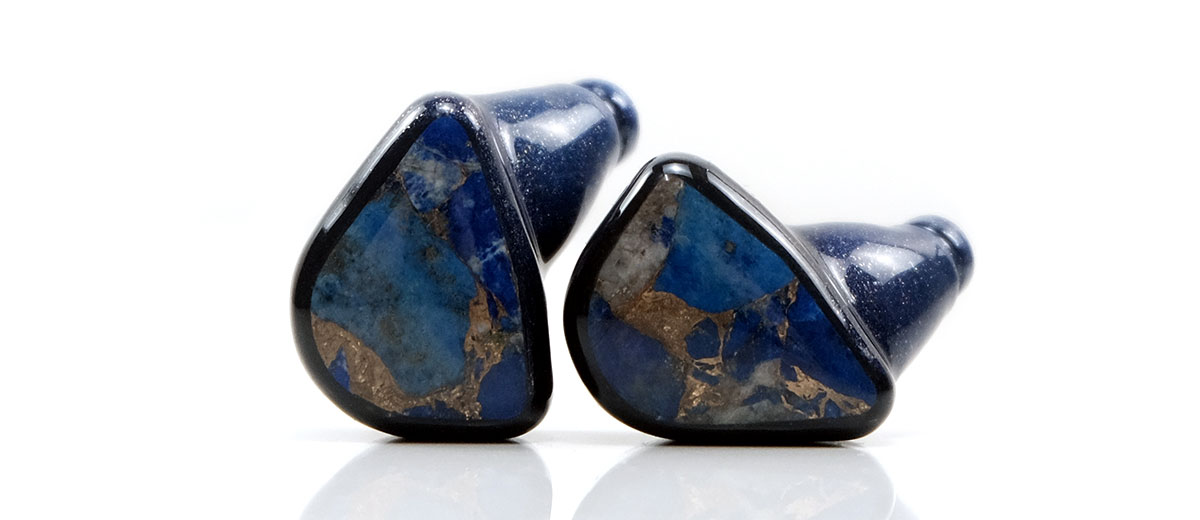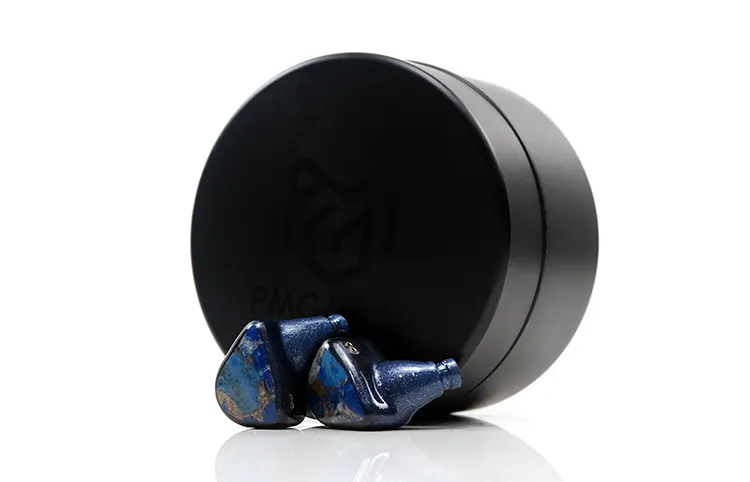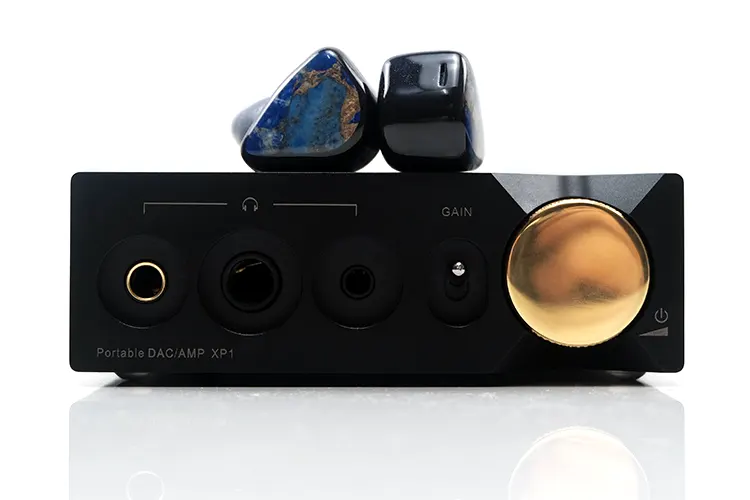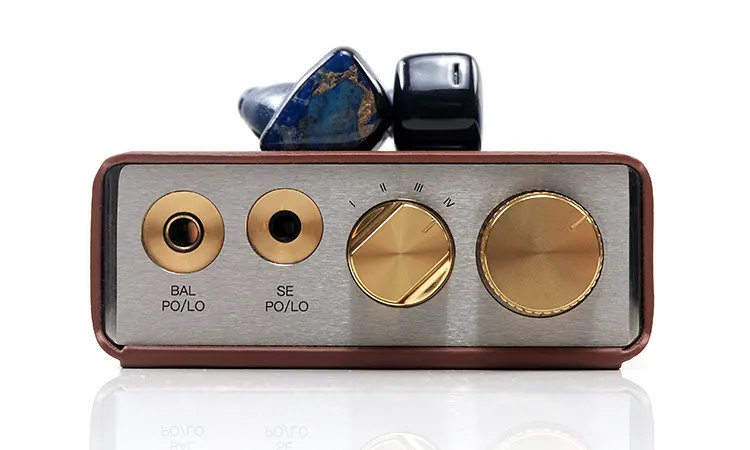Sound Impressions
The following sound impressions of the PMG Audio Apx SE were completed using a mix of the iBasso DX320 MAX Ti and the Cayin N8ii. The Apx SE was fitted with the stock silicone tips and cable with the 4.4mm balanced plug.
Summary
The original has world-class technical capability, projecting one of the most complex soundstage and imaging experiences I have ever heard from an IEM.
The Apx SE nails the tonal side, the one topic that resonated among the first batch owners on what exactly could or should be improved on one of the best IEMs of 2024.
It reduces the upper mids and treble overtones from the original, giving up a little of the technical ‘wow’ in exchange for a smoother and weightier performance that is much easier to match with a wider range of sources.
I would describe the soundstage as similar to adding a bit of crossfeed to the original’s incredible separation, bringing things a little closer together for something that arguably sounds more true to life whilst enhancing depth and headroom.
As a result, I believe most will describe the Apx SE as the more balanced of the two with a tonal quality that is more pleasing to the ear but not quite as dynamic and vivid sounding as the original.
Honestly, I could take either and I see the massive appeal of both monitors. There is no denying the magic of the original’s hugely immersive presentation. However, the additional depth and power with the warmer and less edgy midrange performance makes the Apx SE the better choice for ‘enjoying’ great music.
As before, the Apx SE is relatively easy to drive but I prefer a dynamic and resolving source to maximize its potential. Unlike before, the Apx SE can handle brighter sources or those with a rawer upper mids tone.
I still prefer the silicone stock tips over foam, especially with that smoother sound signature. The foam tips dampen the vibrancy a bit much for my tastes compared to the silicone’s more open presentation.
Frequency Response
So, how did we go from the original to the SE? The most obvious change is the lowering of the 4-10k presence which draws some of the sting out of the treble presence.
It sounds like anywhere from a 3-5 dB reduction across that range but perhaps a little rise beyond 10k for some additional headroom over the original.
The most obvious flattening is around the Apx SE’s 5-6k range where the original picked up a lot of treble energy. That high contrast upper harmonic balance order has been pushed back now which, combined with more low-end warmth, brings that pleasing midrange harmonic balance to instruments and vocals.
Subjectively, the Apx SE bass sounds a lot fuller but the enhancement is not measured in multitudes of dB to get there.
I would say at most around 2 dB with a more significant rise from the mid-bass through to around 500Hz to create a thicker lower mids presence, a stronger instrumental fundamental frequency, and that bit of warmth in the instrument timbre missing from the original.
The rest of the mids curve is still relatively neutral through the mids up to around 1-2k. Vocals are slightly relaxed and not overly forward but with a more even-harmonic and natural-sounding coloration with some additional body similar to the lower mids.
It’s not 100% treble sheen-free though I only find that little overtone comes into play on neutral to bright sources such as the DC Elite.
It depends on the instrument but the most obvious is usually hi-hat and cymbal splashes which might be pulling from a 10k-12k upper treble lift. I do not hear it all on warmer or sweeter-sounding sources such as the N8ii or the N7 from Cayin.
Staging & Dynamics
The Apx SE is one of the best IEM sound stages I have heard in years though not quite as immersive and captivating as the original.
Technically, it’s deeper and to the studied ear also a bit taller than the original. Where it just drops behind the original a little is the lateral width and the degree of channel separation.
This is where my crossfeed reference comes into play because now the imaging plays more like a band in the middle of a larger stage rather than scattered over an arena. Compared to any other IEM that I have tested this is a huge-sounding monitor, just not quite as complex or natural versus elaborate to coin a phrase.
The power is improved on the lows though. If the original lacked weight for your preferences then the Apx SE will be more accommodating. It’s a fantastic IEM for pop and rock, perhaps even more so than the original when it comes to that emotional connection you often get with live recordings.
A factor in the above is likely the dialing down of the lower treble presence. It softens the more delicate notes with peripheral cues still present but pristine and sparkling as before.
There is a case for this heightened contrast injecting note impact with more bite and excitement, enhancing the dynamic range and grabbing your attention more. Whereas the Apx SE presents the same notes in a more balanced and flowing manner that is less fatiguing.
Synergy
Efficiency & Sensitivity
The PMG Audio Apx SE is rated at 5Ω ±1Ω for impedance and 107 dB/mW @1Khz for sensitivity which are the same numbers as the original Apx.
It’s about middling for an IEM in terms of the power required to drive and not hugely different from the likes of First Light, Noble’s Viking Ragnar, and the Allegro from PLUSSOUND.
A decent DAP or a dongle in medium or high gain mode (around 250mW balanced output ideally) should provide more than enough headroom. A good example is the 280mW (32Ω) rated iBasso DC-Elite dongle DAC which drives the Apx SE with ease.
As with the previous Apx, however, the level of dynamic range and resolving capability from your source are important. Dongles do ok but sound somewhat softer and less distinct than devices with better voltage rails and generally more power.
So yes, the Apx SE can scale on a moderate level much like the original. The more resolving and better the DAP is for headroom the better this monitor performs, which I think is critically important because there are levels to the Apx SE’s performance that are only revealed when you improve the quality of the source.
DAP Pairings
The DX320 MAX Ti is still the master for resolution and dynamic range with the Apx SE. The micro detail, precise instruments, and vocal imaging are mesmerizing, showing off how capable this monitor is.
However, if you are after the new smoother and weightier Apx SE coloration other DAPs are better suited to capturing that quality, even if the technical side is not quite up to the DX320 MAX Ti level.
The one aspect of the DX320 MAX Ti that left me slightly cold with the Apx SE was a stronger treble overtone over the upper mids and around 8k. It’s not always there but after a session or two with the Cayin N8ii, you can pick up on it.
It’s not as raw as the ONIX Mystic XP1 which is rougher for tonal balance despite excelling for bass weight and power. I found the XP1 very impressive for macro staging and depth but the Apx SE’s holographic layering took a bit of a hit compared to DX320 MAX Ti and the HiBy R8 II.
The R8 II is not as good for detail and dynamic range but its slightly rounded treble quality sat well for me. It’s also a nice confident and open midrange which the Apx SE seems to take well to.
Of the two Cayin DAPs, the N8ii better captures the smooth yet vibrant quality of the Apx SE’s tuning than the N7. Of the four this would be my top choice. It delivers sweeter mids and treble sound, plenty of vocal bloom, and does not bloat the Apx SE low-end excessively.
I find the N7 excellent for filling the Apx SE soundstage out but once you start referencing it lacks the precise detail and vocal presence of the other DAPs.
Dongle Pairings
I tried three dongles with the Apx SE using a Samsung S23 Ultra with the DAP split more or less duplicated at the dongle level.
On the one hand, the iBasso DC-Elite is the most resolving and dynamic sounding of the tested dongles. No issues with headroom, a wonderfully expansive and holographic soundstage with a tonal quality that is clean and precise sounding.
The only kicker is when cymbals and hi-hats get busy through the highs which seems to sound a little thin and tizzy, running contrary to how I want the Apx SE to sound.
Enter the Cayin RU7. It is not as resolving or as dynamic as the DC-Elite but nails the Apx SE tuning with the correct harmonic balance creating an expansive and smooth tonal quality through the mids and highs.
The third dongle was the HiBy FC6 and normally I love its fat and rich bass and vocal presentation but with the Apx SE, it sounded a bit flat and one-dimensional.
Tonally it’s ok but the lack of depth in the soundstage was very obvious when compared to the other two dongles. I do not think I can live without a deep soundstage from the Apx SE.







